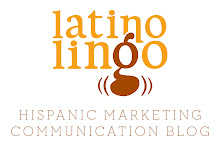Connecticut average age getting older (except for Hispanics)
Why is this significant? First, the actual age of non-Hispanic Whites in Connecticut is 43; meaning the younger Hispanic population is why the overall median age is 3 years younger.
Second, as I wrote in March when the state Census figures were released, Hispanics accounted for 94% of the real growth in Connecticut. The total population increased by 168,532 people and the Hispanic population increase was 158,746. Non-Hispanic Whites actually decreased by nearly 100,000 people.
This means that Connecticut's future consumers, future business owners and the future workforce are going to be more and more Hispanic. And that is certainly significant and worth mentioning.
I really wish news articles on population changes told the whole story.
Labels: Hispanic media spending, Hispanic population growth, Hispanic purchasing power

